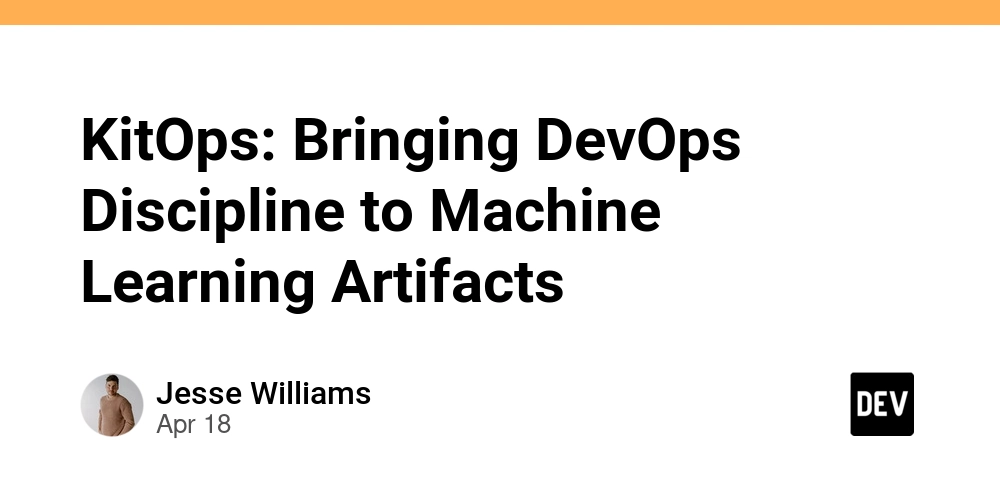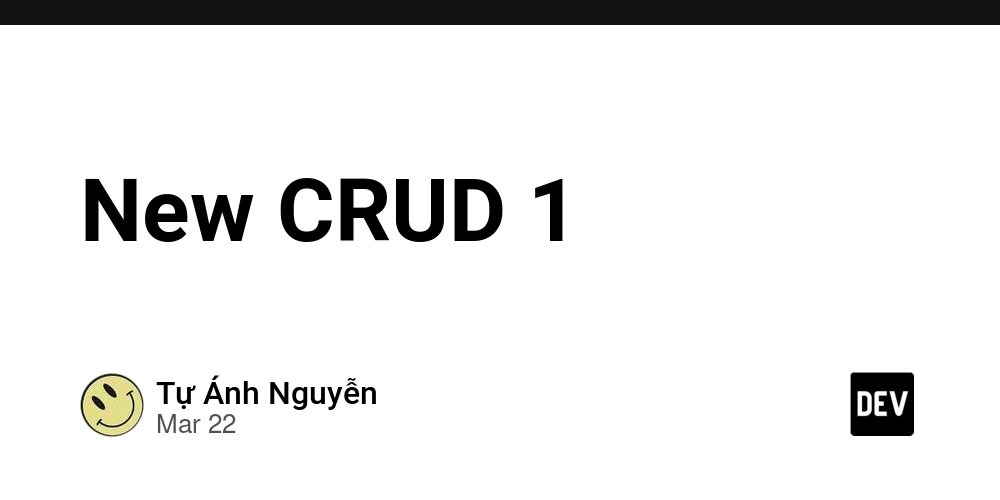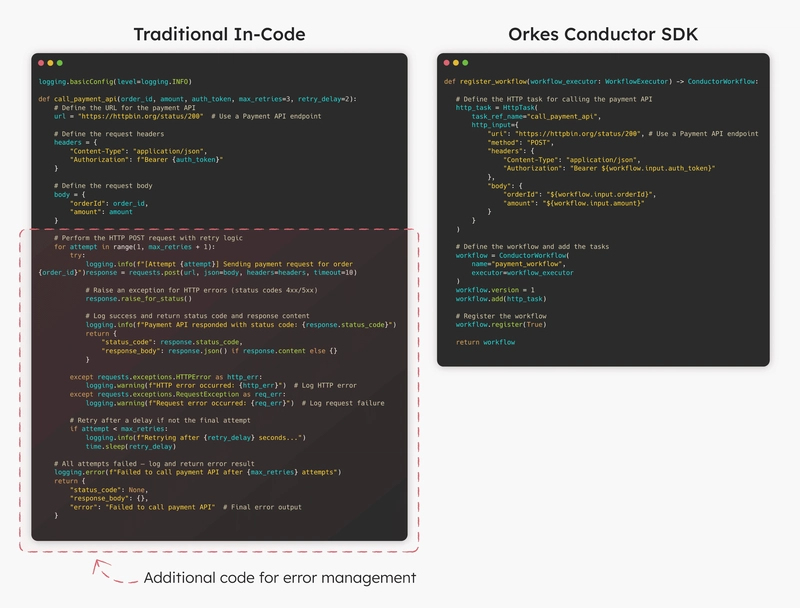KitOps: Bringing DevOps Discipline to Machine Learning Artifacts
Yesterday, KitOps project lead and Jozu CTO, Gorkem Ercan joined Docker Captain, Brett Fisher to discuss how KitOps is addressing one of the most overlooked challenges in ML operations - artifact management. This conversation highlighted how the growing intersection between traditional DevOps and ML engineering is creating new challenges that require specialized tooling. The Problem: ML's "Wild West" of Artifact Management As Brett pointed out during the conversation, many platform engineers and traditional DevOps professionals are increasingly being asked to support ML workloads without necessarily having ML expertise. Meanwhile, data scientists who excel at creating models often lack infrastructure automation experience. "Everything's all over the place," Brett noted while discussing the current state of ML artifact management. "Instead of someone reading 50 pages of documentation to try to figure out what things they need to download, what assets they need to get started, [KitOps] almost feels like the Docker compose file of MLOps." Gorkem confirmed this observation, explaining that before KitOps, ML artifacts were stored "wherever" - from Windows file servers to network shares, Google Drive, and S3 buckets. This created significant challenges for traceability, security, and deployment. What Makes KitOps Different KitOps consists of three main components: The Model Kit Specification - A standardized format for ML artifacts based on OCI standards The CLI Tool - For managing these artifacts with familiar commands OCI Registry Integration - Leveraging existing container registry infrastructure "We wanted to create a bit of separation between roles," Gorekm explained. "Data scientists are really proficient in certain parts of AI and ML, but they are not the ones going to apply platform engineering DevOps techniques to take things into production." Shivay, a KitOps contributor and Jozu advocate added that while tools like Kubeflow try to help bridge the gap between DevOps and ML teams, KitOps specifically focuses on "how you package your machine learning systems in a more efficient and secure manner." Practical Applications and Commands During the demonstration, Gorkem showed how KitOps works with straightforward commands that will feel familiar to Docker users: kit pack - Package ML artifacts (similar to Docker's build) kit pull - Pull artifacts to a local cache kit unpack - Extract artifacts without caching kit list - View available artifacts kit info - Get detailed information about artifacts The CLI also includes utilities like local caching to prevent duplicating large files, support for multiple model formats (including scikit-learn, PyTorch, TensorFlow, and ONNX), and even a development command for testing LLMs. Security and Enterprise Integration One of the most compelling aspects discussed was how KitOps leverages existing OCI registries that organizations already use, complete with enterprise features like RBAC, auditing, and signing capabilities. "The good thing about Docker registries is they already exist in your organization," Gorkem explained. "Someone already has RBAC built on top of it, someone has auditing built on top of it." Shivay emphasized how this helps with security: "We use a tool like cosign to sign our models as well... you are actually able to attach attestations and signing to your models and datasets." The Future: Standardizing ML Artifacts The conversation concluded with a discussion about the future of ML artifact standardization. Gorkem mentioned ongoing work with companies like Red Hat and potentially Docker on a new model packaging specification, aimed at creating greater interoperability between different tools in the ecosystem. When Brett asked about compatibility with Docker's new Model Runner, Gorkem acknowledged the current fragmentation in the space but expressed hope for convergence: "If they are interoperable, then I don't think there is a lot of reason for competing on the media type..." As organizations continue to integrate ML workloads into their infrastructure, tools like KitOps that bring the rigor and discipline of DevOps to the ML world will become increasingly important, helping both data scientists and platform engineers collaborate more effectively. This blog post summarizes a conversation with Gorkem Ercan (CTO of Jozu and co-creator of KitOps) and Shivay (a KitOps contributor) on Brett Fisher's livestream, discussing how KitOps is standardizing the management of ML artifacts in cloud-native environments.

Yesterday, KitOps project lead and Jozu CTO, Gorkem Ercan joined Docker Captain, Brett Fisher to discuss how KitOps is addressing one of the most overlooked challenges in ML operations - artifact management. This conversation highlighted how the growing intersection between traditional DevOps and ML engineering is creating new challenges that require specialized tooling.
The Problem: ML's "Wild West" of Artifact Management
As Brett pointed out during the conversation, many platform engineers and traditional DevOps professionals are increasingly being asked to support ML workloads without necessarily having ML expertise. Meanwhile, data scientists who excel at creating models often lack infrastructure automation experience.
"Everything's all over the place," Brett noted while discussing the current state of ML artifact management. "Instead of someone reading 50 pages of documentation to try to figure out what things they need to download, what assets they need to get started, [KitOps] almost feels like the Docker compose file of MLOps."
Gorkem confirmed this observation, explaining that before KitOps, ML artifacts were stored "wherever" - from Windows file servers to network shares, Google Drive, and S3 buckets. This created significant challenges for traceability, security, and deployment.
What Makes KitOps Different
KitOps consists of three main components:
- The Model Kit Specification - A standardized format for ML artifacts based on OCI standards
- The CLI Tool - For managing these artifacts with familiar commands
- OCI Registry Integration - Leveraging existing container registry infrastructure
"We wanted to create a bit of separation between roles," Gorekm explained. "Data scientists are really proficient in certain parts of AI and ML, but they are not the ones going to apply platform engineering DevOps techniques to take things into production."
Shivay, a KitOps contributor and Jozu advocate added that while tools like Kubeflow try to help bridge the gap between DevOps and ML teams, KitOps specifically focuses on "how you package your machine learning systems in a more efficient and secure manner."
Practical Applications and Commands
During the demonstration, Gorkem showed how KitOps works with straightforward commands that will feel familiar to Docker users:
-
kit pack- Package ML artifacts (similar to Docker's build) -
kit pull- Pull artifacts to a local cache -
kit unpack- Extract artifacts without caching -
kit list- View available artifacts -
kit info- Get detailed information about artifacts
The CLI also includes utilities like local caching to prevent duplicating large files, support for multiple model formats (including scikit-learn, PyTorch, TensorFlow, and ONNX), and even a development command for testing LLMs.
Security and Enterprise Integration
One of the most compelling aspects discussed was how KitOps leverages existing OCI registries that organizations already use, complete with enterprise features like RBAC, auditing, and signing capabilities.
"The good thing about Docker registries is they already exist in your organization," Gorkem explained. "Someone already has RBAC built on top of it, someone has auditing built on top of it."
Shivay emphasized how this helps with security: "We use a tool like cosign to sign our models as well... you are actually able to attach attestations and signing to your models and datasets."
The Future: Standardizing ML Artifacts
The conversation concluded with a discussion about the future of ML artifact standardization. Gorkem mentioned ongoing work with companies like Red Hat and potentially Docker on a new model packaging specification, aimed at creating greater interoperability between different tools in the ecosystem.
When Brett asked about compatibility with Docker's new Model Runner, Gorkem acknowledged the current fragmentation in the space but expressed hope for convergence: "If they are interoperable, then I don't think there is a lot of reason for competing on the media type..."
As organizations continue to integrate ML workloads into their infrastructure, tools like KitOps that bring the rigor and discipline of DevOps to the ML world will become increasingly important, helping both data scientists and platform engineers collaborate more effectively.
This blog post summarizes a conversation with Gorkem Ercan (CTO of Jozu and co-creator of KitOps) and Shivay (a KitOps contributor) on Brett Fisher's livestream, discussing how KitOps is standardizing the management of ML artifacts in cloud-native environments.










































































































































































![[The AI Show Episode 144]: ChatGPT’s New Memory, Shopify CEO’s Leaked “AI First” Memo, Google Cloud Next Releases, o3 and o4-mini Coming Soon & Llama 4’s Rocky Launch](https://www.marketingaiinstitute.com/hubfs/ep%20144%20cover.png)


















































































































![[DEALS] The All-in-One Microsoft Office Pro 2019 for Windows: Lifetime License + Windows 11 Pro Bundle (89% off) & Other Deals Up To 98% Off](https://www.javacodegeeks.com/wp-content/uploads/2012/12/jcg-logo.jpg)





































![Is this too much for a modular monolith system? [closed]](https://i.sstatic.net/pYL1nsfg.png)






















































































































_Andreas_Prott_Alamy.jpg?width=1280&auto=webp&quality=80&disable=upscale#)
































































































![What features do you get with Gemini Advanced? [April 2025]](https://i0.wp.com/9to5google.com/wp-content/uploads/sites/4/2024/02/gemini-advanced-cover.jpg?resize=1200%2C628&quality=82&strip=all&ssl=1)













![Apple Shares Official Trailer for 'Long Way Home' Starring Ewan McGregor and Charley Boorman [Video]](https://www.iclarified.com/images/news/97069/97069/97069-640.jpg)
![Apple Watch Series 10 Back On Sale for $299! [Lowest Price Ever]](https://www.iclarified.com/images/news/96657/96657/96657-640.jpg)
![EU Postpones Apple App Store Fines Amid Tariff Negotiations [Report]](https://www.iclarified.com/images/news/97068/97068/97068-640.jpg)
![Apple Slips to Fifth in China's Smartphone Market with 9% Decline [Report]](https://www.iclarified.com/images/news/97065/97065/97065-640.jpg)




































































































































